Pseudo-Western style architecture in Matsumoto (2)
This is a continuation of the previous article.
I saw the Panel Exhibition “Architecture in Matsumoto, 2021 : Pseudo-Western style architecture that adorned the city". From that exhibition, I pick up and write about only the buildings that once existed in the Matsumoto area but no longer exist.
In this issue
(3) The Jushi National Bank
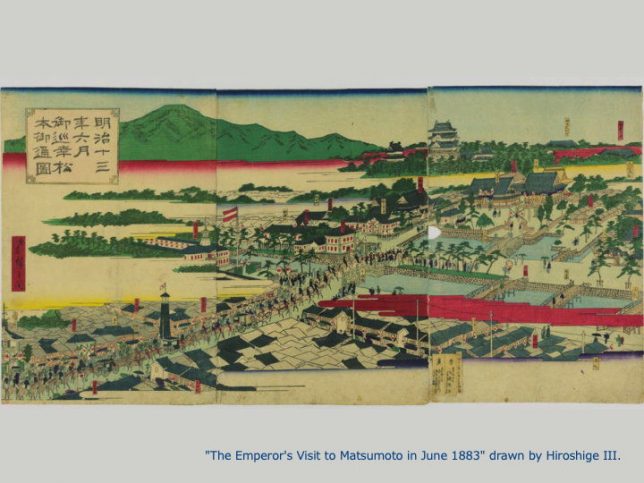
“Jushi" means fourteen.
This colored woodblock print is “The Emperor’s Visit to Matsumoto in June 1883" drawn by Hiroshige III. This time, I thought I would have to draw a poor picture as I did last time because I ddi not use a photo taken at the venue. But this picture was available in the public domain, so I could use that. I was relieved.
In the panel exhibition, a part of this print was enlarged and displayed, so the same part is shown below. In the image above, it is the left side of the screen.
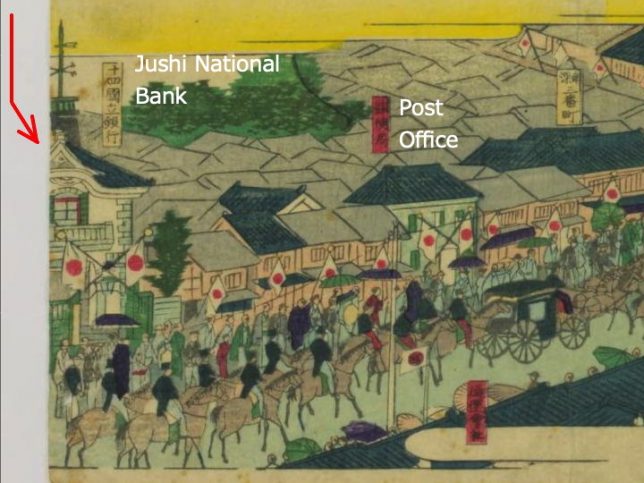
On the left side of the screen, there is a pseudo-western style building. Next to it is the name “Jushi National Bank".
This print includes buildings that still exist today, such as Matsumoto Castle and Kaichi School, so we can see how accurately the print was reproduced, but I felt that although it was not accurate, the atmosphere was well represented.
So, even if it is not accurate, it is written in the panel exhibition that the bank building must have looked like this.
However, when I looked for the historical records of the Jushi National Bank, I found a photo of a completely different building.
I apologize for the rough quality of the image, but this is the only one I could find, and it is a photo from the “Matsumoto Prosperity Record" published in 1898.
No matter how I look at it, it is not the building depicted in the print above.
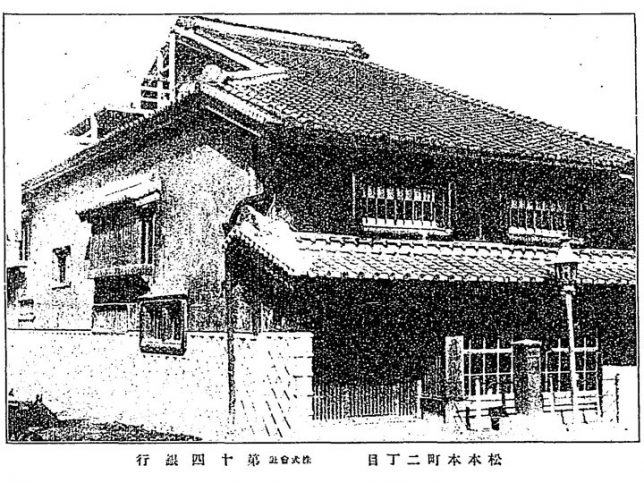
According to Matsumoto Prosperity Record, the Jushi Bank was opened in 1877 as the Jushi National Bank. The bank was renamed “The Jushi Bank, Ltd." in 1897 in accordance with the law, National Bank Pre-Maturity Disposal Act of 1896.
It seems unlikely that the building would have been rebuilt in only 20 years after its opening, and it is also strange that the building has changed from a pseudo-western style structure to what looks like a soil Japanese storehouse structure.
I thought that one of them might be the main store and the other a branch, but as of 1897, there were only branches in Tokyo, Ina, and Kiso-Fukushima, and only one in Matsumoto.
I even thought that Hiroshige might have misunderstood another building as the Jushi Bank.
I rewrote the center part of the city map of Matsumoto, which was published in the book “Matsumoto Prosperity Record".
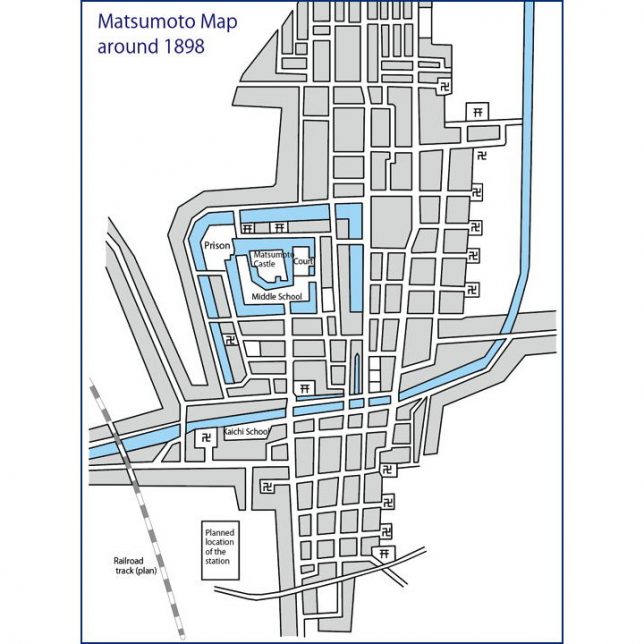
I superimposed the scene of the Emperor’s visit to Matsumoto in 1881, although the year is different.
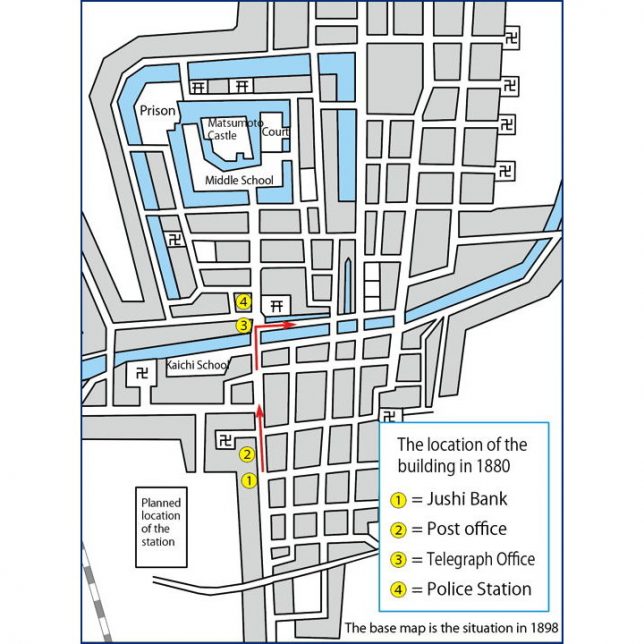
The red arrows indicate the direction in which the procession is moving in the print, and the round numbers indicate the buildings whose names are written in the print.
(1) and (2) may possibly be slightly misaligned up or down, but I think this position is generally good.
Why is it that the building which was there in 1898 is not there in 1898?
I had no idea, so I looked at the Matsumoto City History.
Then, I saw the words “The Great Matsumoto Fire".
There were three major fires in Matsumoto during the Meiji era, 1886, 1888, and 1912. The fire of 1888 occurred on January 4 in Minami-Fukashi (south area). The fire destroyed 1,200 houses in Minami-Fukashi and 355 houses in Kita-Fukashi (north area), a total of 1,553 houses.
It was written that the post office, police station, and junior high school were completely burned down and the county office was half burnt down.
(The extent of the fire is based on a diagram published in the “Higashi Chikuma County, Matsumoto City, Shiojiri City History vol.3" (1962).
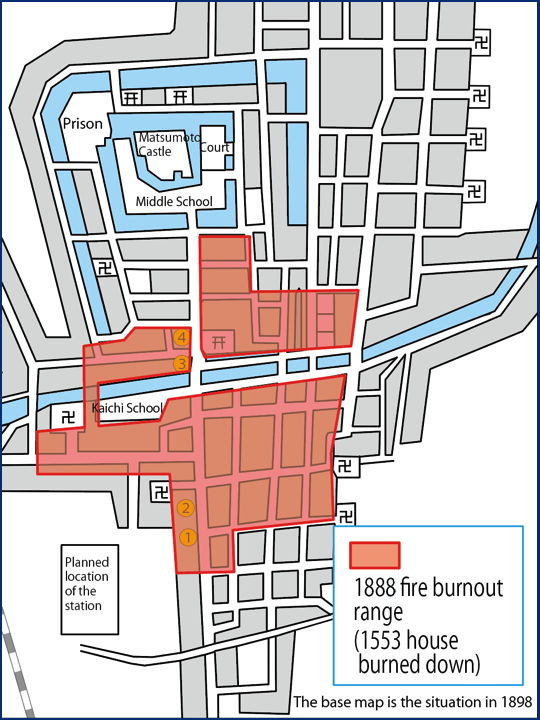
In the 1878 print, there is a telegraph office at the crossing of the Metoba River, and next a police station , and the county office is mentioned only in letters behind it. The buildings two rows from the river in this print were probably burned down.
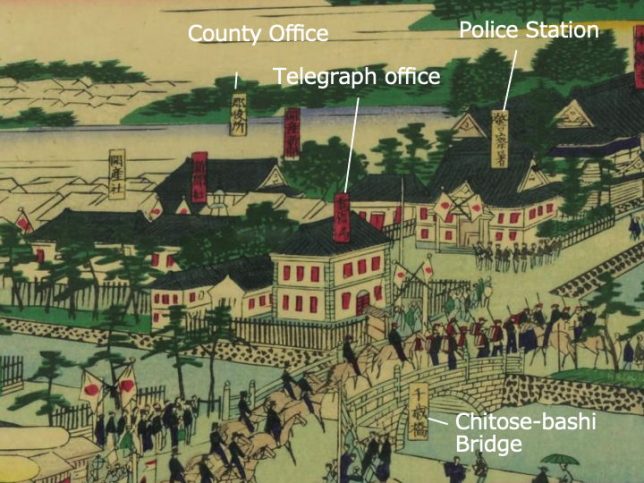
The post office was located on the south side of the river (second image in the article), and it too was said to have burned down.
The Jushi Bank is also included in the burned area, so it is assumed to have burned down.
Since I have not found any record of the “Jushi Bank burning down," I can only speculate, but I think it is safe to assume that the building in this picture was destroyed by fire in 1888.
(Supplement: The post office was moved in 1889 to the place where the telegraph office used to be, and became the Postal Telegraph Office. This will be written in the next article.)
In Matsumoto, the soil Japanese storehouse style became popular after a fire in 1888. The fact that the building of the Jushi Bank was converted to an earthen storehouse makes sense when I consider that it was rebuilt after the fire.
The following figure is a map of the fire area with the names of the towns “Nakamachi" and “Miyamura-machi" added on it.
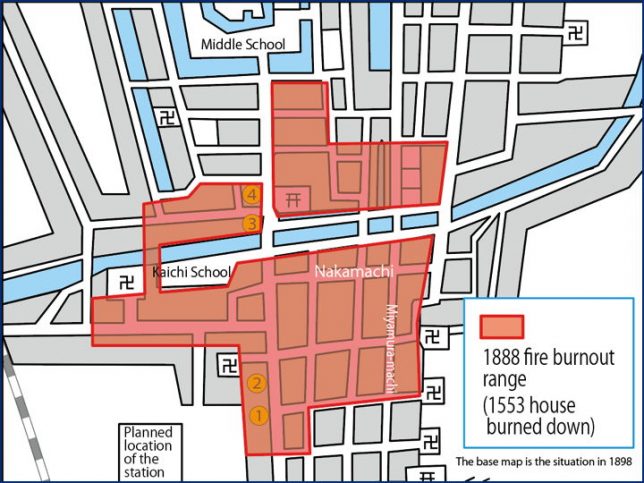
In Nakamachi, many merchants built soil Japanese storehouses style buildings after the fire in 1888. The street is now promoting the development of a town with soil Japanese storehouses.
Here are two photos of the buildings in Nakamachi.
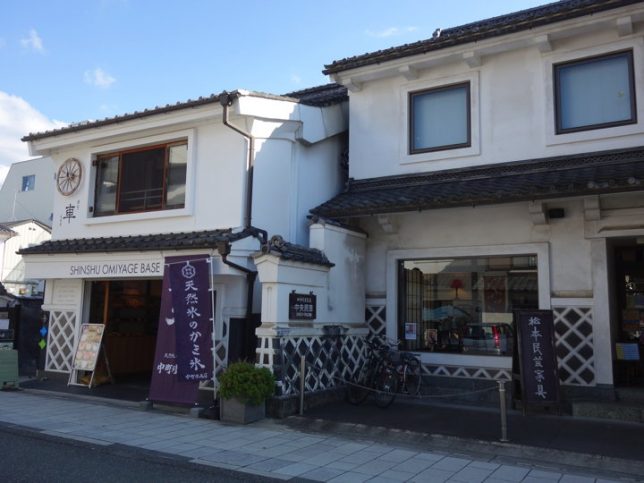
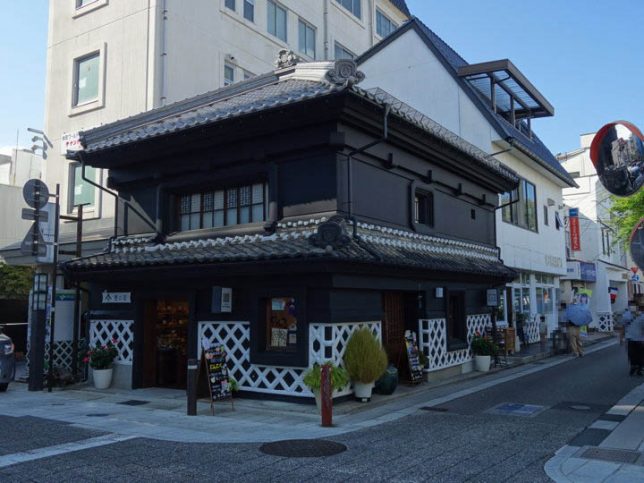
The building in the next photo is a relocated reconstruction of the main building, storehouse, and detached room of the Tairei Sake Brewery, which was originally located in Miyamura-machi. It was opened in 1996 as the “Nakamachi Kura-shikku-kan" and is used as a core facility for the community.
This building was also built in 1888, just after the fire.
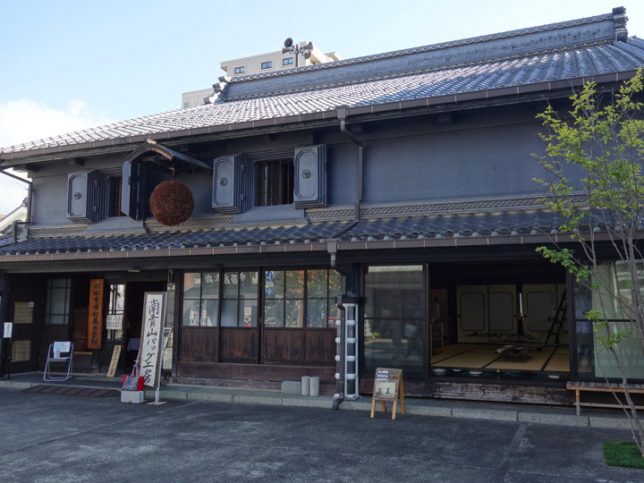
Finally, about the Jushi Bank. The bank’s management deteriorated due to the stock market crash in 1907, and it went bankrupt the following year.
[Reference] (all books are written in Japanese)
“Matsumoto Prosperity Record" by Sanetaro Yamauchi, Ikubundo, 1898
“History of Matsumoto City, Volume 4": by Matsumoto City, 1995.
“Higashi Chikuma County, Matsumoto City, Shiojiri City History vol.3", 1962
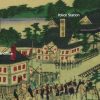
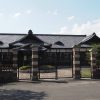
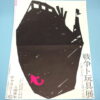
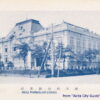
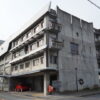

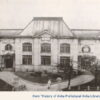
Recent Comments